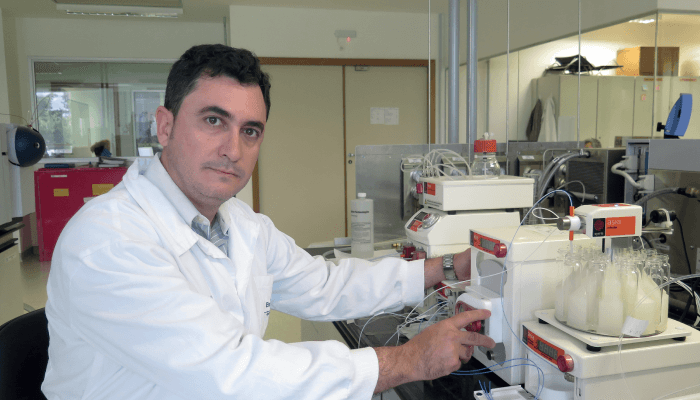Books have always fascinated me since childhood – so it’s a privilege to be able to publish one! Regarding the topic, it is exciting to write about analytical chemistry applied to agriculture – it’s such an important activity for humanity.
Agriculture remains one of the strategic sectors for the global economy and it is integral to its well-being. But it’s also seen as a source of environmental and health concerns – mainly because of the widespread use of agrochemicals (for example, pesticides and fertilizers) and veterinary drugs, which are used to not only treat illness but also promote livestock productivity. Unfortunately, agrochemicals generate residues, which are present in crops, fruits, meats, and processed products (food and feed), which need permanent monitoring and control. The measure of chemical residues in agriculture and livestock is paramount. And so analytical chemistry contributes to the generation of wealth and health for modern society.
The use of advanced analytical techniques can generate reliable information about the quality of products and raw materials. Furthermore, the current demand for more sustainable food production systems has promoted the development of policies aimed at reducing the negative impacts on the environment and overall health, as well as promoting friendly materials, molecules, and bioactive compounds.

According to the World Health Organization, there are more than 1000 pesticides used around the world to ensure food is not damaged or destroyed by pests – and each pesticide and agrochemical has differing properties and toxicological effects. International policy efforts are essential to ensure the quality and security of agricultural systems – across the whole chain, from crops to food – their products and their sustainability, especially for commodities.
The Codex Alimentarius Commission (CAC) can be considered the main global effort dedicated to construct and maintain safety in world agricultural trade.
When it comes to the analytical determination and subsequent control of residues in food and the environment, highly qualified professionals and advanced analytical instrumentation are essential. Unfortunately, not all countries can fulfil these requirements.
Regarding recent developments, paper-based sensors using microfluidic (lab on paper) have brought the promise of cheap, simple, and accessible devices for quick, easy, and in-field detection of contaminants and pollutants. In a general way, several probes and sensors (spectroscopic and electrochemical) are under development to make the life of the analytical chemist easier. Moreover, the green analytical chemistry approach can be applied to make methods more sustainable.
Regarding which techniques are most important today, LC and GC-based techniques are the most used for organic residues (for example, pesticides in food and the environment), whereas absorption and emission spectrometry are most common for inorganic residues (for example, toxic metals in the environment).
The main challenge was to prepare a text dedicated to two very complex branches – agricultural matrices and environmental matrices. Certainly, it took a lot of time. So my advice? Be sure you want to go down that road; it is long and challenging! But also, at least in my experience, the return is worth it.
You can purchase "Analysis of Chemical Residues in Agriculture" here
References
- Analysis of Chemical Residues in Agriculture, Elsevier (2021). Available at: https://bit.ly/2WGOt08




